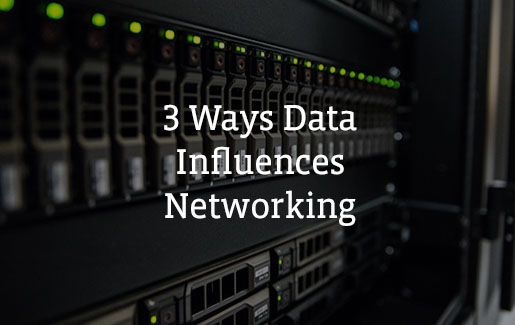 In a business environment dominated by discussions on emerging technology, it can be easy to forget that IT systems have many different components. It can also be easy to forget that the components outside of the spotlight are actually the ones that support the shiny new solutions. Infrastructure such as servers, cybersecurity and first-line IT support continue to be critical areas for any business trying to accelerate their technology strategy.
In a business environment dominated by discussions on emerging technology, it can be easy to forget that IT systems have many different components. It can also be easy to forget that the components outside of the spotlight are actually the ones that support the shiny new solutions. Infrastructure such as servers, cybersecurity and first-line IT support continue to be critical areas for any business trying to accelerate their technology strategy.
Among all the foundational IT topics, computer networking may be the most important one for companies to get right as they go through digital transformation. Although the area of computer networking is very broad with many subcategories, Grand View Research projects that global spending on enterprise network solutions will hit nearly $65 billion by 2024.
The connection between networking and emerging tech trends is the corporate data that fuels innovation, and CompTIA research from the past, present and future drives this point home.
3 Ways Data Influences Computer Networking
Big Data
The big data craze has cooled in the past couple years. Where there used to be some fascination with datasets at enormous volume or complex variety, businesses came to realize that a comprehensive data strategy was needed. Many firms did not have formal practices around their existing data management, so this became the starting point that eventually led to big data.
During the period of high interest in big data, CompTIA conducted a series of studies on the subject. The latest report in this series looked at how data volumes were growing across a wide spectrum of applications, from 58% of companies reporting growth in customer relationship data to 38% of companies reporting growth in audio files being captured.
In the modern era, the applications generating all this data are often spread across a variety of cloud providers, driving a need for networks that can connect many different sources and prioritize many types of data.
Blockchain
More recently, blockchain and other distributed ledger technologies have gotten attention as a way to disrupt traditional methods of data capture. Blockchain is most commonly thought of as the technology behind Bitcoin, but the implications go far beyond cryptocurrency.
When asked what part of the technology stack blockchain is actually replacing, most experts say that the closest component is probably the database, but not all databases are candidates for a blockchain overhaul.
According to CompTIA’s blockchain research brief, digital identity and asset management are the top use cases for companies exploring blockchain technology. Payments ranks last in the list, partly because existing payment systems work better in real-time than prototype blockchain systems.
The networks connecting these disparate systems will need to be tuned to handle the characteristics of each application.
Data
With digital data playing a much more prominent role in corporate strategy, CompTIA decided to take a step back and explore the general approach companies are taking for data management. The upcoming report, due in February, finds that only 25% of companies are exactly where they want to be when it comes to the way they currently handle their data.
As businesses begin building more formal data policies, the underlying network will be expected to handle different types of demands. The big data trend shows that data will be coming from many different sources. The blockchain trend shows that data will be handled differently depending on the record-keeping application. The resulting network will be highly complex to address all the issues.

A Multi-vendor Approach to IT Infrastructure
As businesses make decisions on how to build out their IT infrastructure, one of the first choices is whether to use a single vendor for all their computer networking needs or to go with a multi-vendor model. There are pros and cons to each side, but the growing complexity of computer networks suggests that a multi-vendor approach will continue to gain traction since different vendors can bring different strengths.
For network engineers, supporting and managing these multi-vendor environments will demand top skills. CompTIA Network+ helps IT pros build these skills and prove them to potential employers. CompTIA IT certifications are vendor neutral, which means IT pros who have them know how to apply their skills to any equipment.
Read more about how CompTIA Network+ compares to Cisco Certified Network Associate (CCNA), which is a vendor-specific IT certification.

